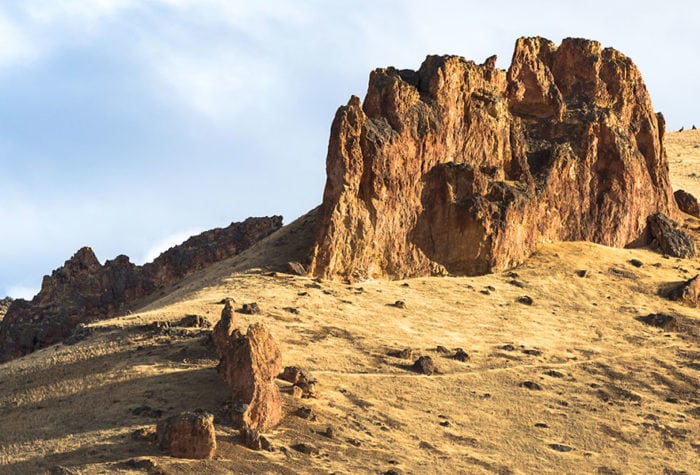Author: Elizabeth MacLagan | Published: May 18, 2023 | Category: Species Spotlight
Widely planted for habitat restoration, Chokecherry and Blue Elderberry are important species in the high desert ecosystem. These small trees succeed in riparian areas — lands that occur along the edges of rivers, streams, lakes, and other water bodies — making them an essential part of Oregon Natural Desert Association’s work to steward desert waterways. The trees are featured in ONDA work to restore the Malheur River in partnership with the Burns Paiute Tribe.
Chokecherry (Prunus virginiana)
Found throughout North America from the high arctic Canadian provinces and coast to coast in the United States, these small trees show up in archeological middens, attesting to their cultural importance among Native Americans for millennia. In 1629 they were exported to England and were cultivated as an orchard crop in the American colonies as early as 1724.
Prunus is the Roman-named family of cherries, prunes, and plums, while virginiana was assigned by Linneaus, reflecting their presence in colonial Virginia. The common name warns of the astringent quality of the raw fruit.
The early spring flowers attract butterflies, honeybees and ants to their nectar, which in turn attracts insect-eating birds, providing food, cover and nesting habitat. Bears, as well as hares, rodents, and birds eat the fruit, and deer use the shrubs as a winter browse.
Widely planted for habitat restoration, Chokecherry succeed in riparian areas and are an important part of ONDA’s efforts along the Malheur River, where they are spreading by suckering and may eventually form thickets. Like other riparian species, they provide streamside shade and their rhizomatous, net-like root structure helps prevent erosion.
Classified as shrubs or small trees, they may reach 30’ in height, with a spreading crown and alternate oval to elliptical leaves. The white, almond scented flowers are arranged in cylindrical racemes appearing as early as April. Fruits form a few months later, first appearing green, then darkening to red, purple, and black as the season progresses and the leaves turn salmon in fall.

